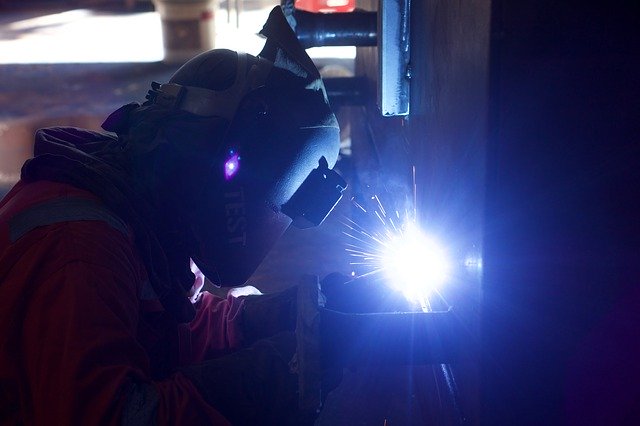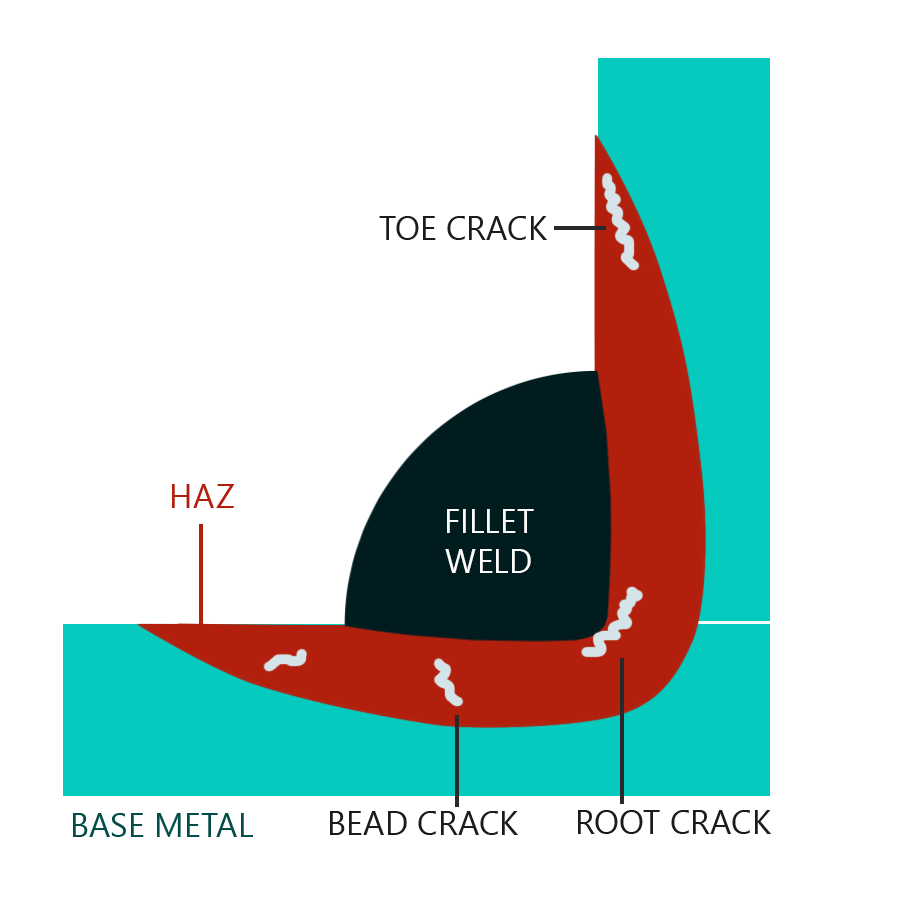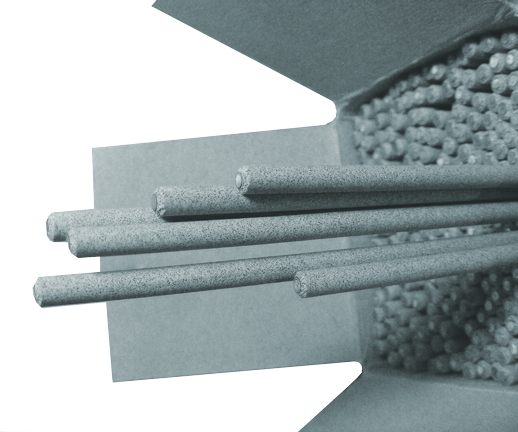
24 Aug Hydrogen Induced Cracking
A short note on hydrogen induced cracking effect in welding.
As the name suggest the phenomenon is cracking in welding as a result of hydrogen seepage. Cracks in welding can happen due to various reason such as welding of dissimilar metal, mismatch in the chemistry of electrode and base metal, improper welding position, dust and impurities during welding, improper gas shielding and improper pre/post weld heat treatment etc. These factors can be reduced or nullified after implementing proper welding procedure.However, one such cracking phenomenon which is commonly called as “Hydrogen Induced Cracking” or HIC is difficult to reduce or completely nullify even after following the proper welding procedure.
What is HIC:
In a simple term, penetration of hydrogen molecules in the heat affected zone (HAZ) from surrounding during welding process which leads to development of micro-cracks within weld zone is called as HIC effect.

It has been experimentally verified that in most low alloy carbon steel which have poor weldability and have high BNH value tends to develop micro-cracks within HAZ after cooling off the welded structure. The primary cause of micro-cracking was found to be due to penetration of hydrogen molecules from surrounding area.
Metallurgical Aspect:
It has been ascertained that High Strength Low Alloy (HSLA) steel such as Ni-Cr-Mo Low Alloy steel etc. possess high hydrogen affinity even at low ppm. The high mobility of hydrogen molecules in body-centered cubic lattice is very common. The ferritic steel with bcc lattice is more susceptible to hydrogen penetration than the austenitic steel which has face centered cubic lattice. The hydrogen affects the grain boundary region by segregating along with Phosphorus, Sulphur, Arsenic and Antimony etc.
It has been found that under extreme multiaxial stress condition the concentration of hydrogen starts deteriorating the ductility of material. The two main effect was noticeable with penetration of hydrogen i.e. micro-voids within metal lattice and embrittlement in the region.

These cracks are commonly referred as the cold cracking effect due to the fact that these effect are more prone at ambient temperature when the weld bead has cooled off. The cracks are mainly present in the HAZ and weld bead region as shown in the picture. These cracks under high multiaxial stress show very less or no plasticity in the crack tip due to which the crack propagation is not ductile. The micro-level effect is not as simple as it has been mentioned here. The overall effect is the embrittlement of HAZ and micro-cracks within it is prone to brittle failure after the crack reaches critical value. The failure is abrupt and does not give any visual clue about the ductile yielding or crack line before failure.
The most dangerous phenomenon is the under bead crack growth at room temperaturewhich can grow even when the part is not loaded.
Fatigue Life Reduction:
The fatigue life is directly related to material homogeneity, surface effect, material hysteresis and elastic & plastic strains. The presence of micro cracks will significantly alter these properties thereby reducing the fatigue life.

The most direct relationship can be drawn from the damage mechanics of the given part. The internal micro-cracks along with frettage corrosion etc. will negatively affect the fracture toughness causing the part to show unpredictable overall life. The most severe impact can be on a part loaded with cyclic loading such as rotating shaft.
How to avoid HIC:
In case if reliability is primary concern then one should completely avoid welding the particular grade which are susceptible to HIC. One can change material or change the design or change the process by using forging/casting blocks in design instead of welded one.

However, if at all we have to achieve the welding of HSLA with high reliability then one has to follow the standard low hydrogen electrode. Preheating the electrode is advisable in case the electrode is kept in a moisture area. Preheating the base metal will also reduce the HIC effect but proper cleaning is mandatory.

Use AWS recommended electrode such as E70XX, EXX15 and EXX16 etc. which deemed suitable as per base metal. Do not use any other electrode as the HIC effect due to faulty electrode has been studied and verified extensively.
Post weld heat treatment immediately after welding is almost necessary with preheat can range from 100°C to 350°C with holding time close to 24h yields good result. One should follow the PWHT as per standard rule while considering the overall structural density.
Please Note:
This just a short note to help readers to understand the complexities. In case of design implementation one should follow the specified code and go through the exhaustive reports.
Reference:
1. Thompson, Moody, 1994- Hydrogen Effects in Materials. TMS Warrendale.
2. Somerday, Sofronis, Jones, 2008 – Effects of Hydrogen on Materials, ASM International. Materials.
3. Pargeter R J and Harrison, 1985 – Compendium of Weld Metal Micro-Structures and properties, IIW.
4. R.W. Staehle, Hochmann, McCright, Slater, 1977 – Stress Corrosion Cracking and Hydrogen Embrittlement of Iron Base Alloys,
5. AWS Welding Code.




film
Posted at 22:58h, 28 NovemberThere is certainly a great deal to know about this topic. I really like all the points you made. Sonja Pen McClary
daftar slot online
Posted at 04:41h, 10 DecemberThank you ever so for you post.Really thank you! Cool.
Mark
Posted at 02:07h, 13 SeptemberThanks for your blog, nice to read. Do not stop.